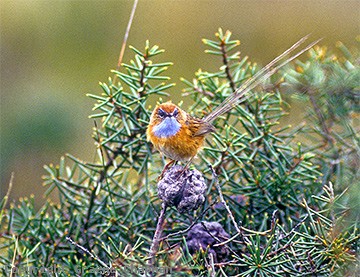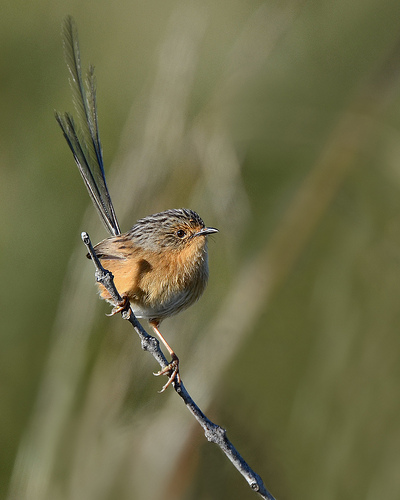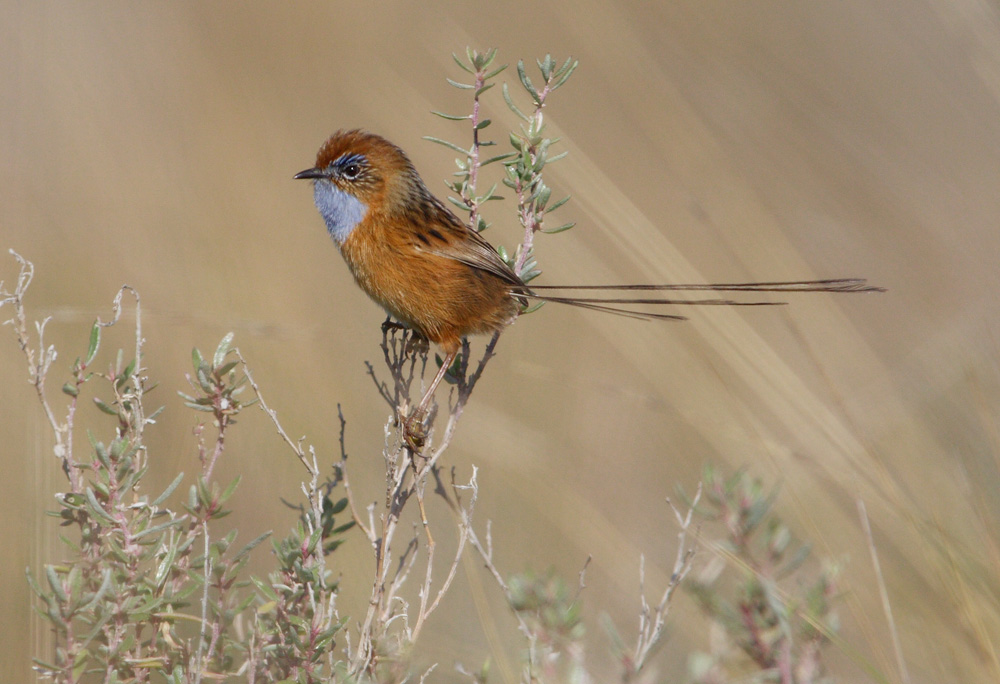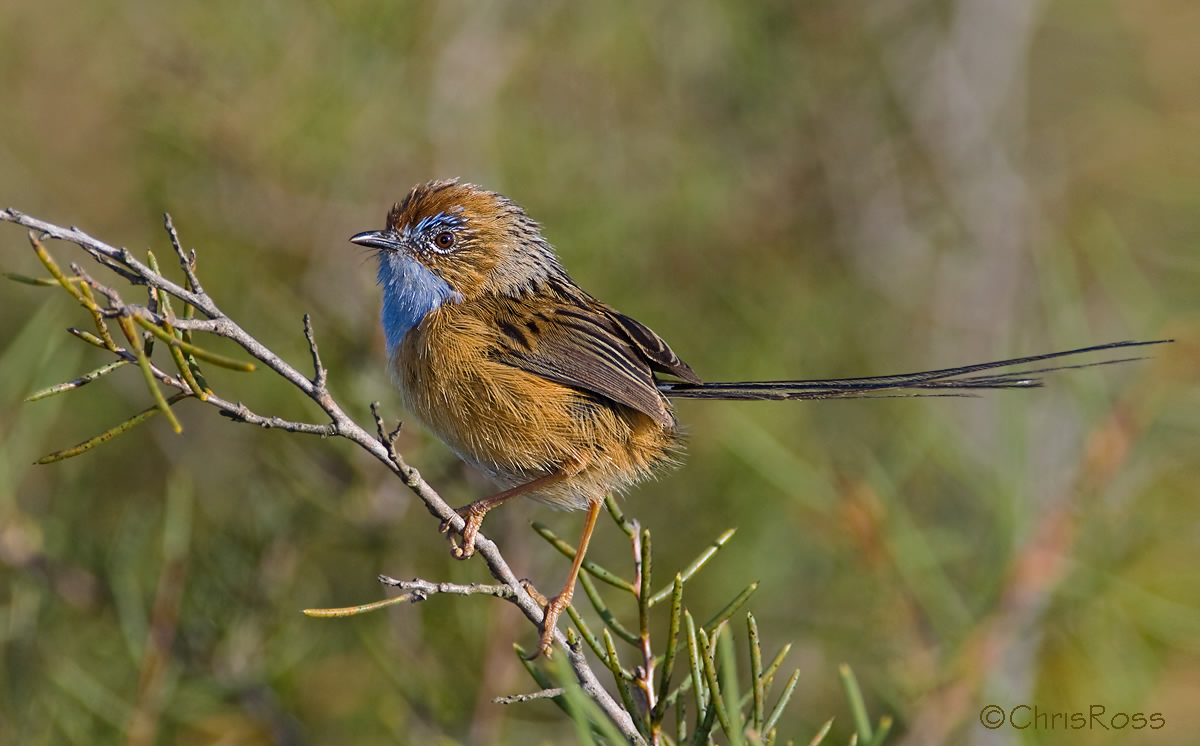
Stipiturus malachurus
TAXONOMY
Stipiturus malachurus Shaw, 1798, Sydney and Botany Bay,
New South Wales, Australia. Eight subspecies.
OTHER COMMON NAMES
French: Queue-de-gaze du Sud; German: Rotstirn-
Bortenschwanz; Spanish: Ratona Emu Sureсa.
PHYSICAL CHARACTERISTICS
6.2–7 in (15.7–17.8 cm); female 0.26–0.29 oz (7.4–8.3 g), male
0.19–0.32 oz (5.5–9 g). Males in breeding plumage have blue
throat and breast that females, nonbreeding males, and immatures
lack.
DISTRIBUTION
Disjunct populations along coast from western Australia to
southern Queensland. S. m. malachurus: from Queensland to
Victoria; S. m. littleri: confined to Tasmania and islands; S. m.
polionotum: from Victoria and south Australia; S. m. intermedius,
S. m. halmaturnius, S. m. parimedia: local
DISTRIBUTION
in south
Australia; S. m. westernensis: in southwestern Western Australia;
and S. m. hartogi: found on Dirk Hartog Island, Shark Bay,
Western Australia.
HABITAT
Occurs in swamps, dunes, and coastal and high-altitude heathlands.
Prefers low, dense vegetation.
BEHAVIOR
Usually found in small groups; secretive; weak flier and difficult
to flush. Social organization poorly known.
FEEDING ECOLOGY AND DIET
Feeding ecology poorly known, but thought to be largely insectivorous,
gleaning invertebrates from dense vegetation and
ground. Will split open stems to get at insects; occasionally
hawks flying insects.
REPRODUCTIVE BIOLOGY
Monogamous pairs hold breeding territory; female builds nest
but fed by male. Clutch is 2–4 red-spotted eggs. Nest parasitized
by several cuckoo species. Incubation mostly by female
for 13–14 days; fledging in 11–15 days.
CONSERVATION STATUS
Not threatened as a species but adversely affected by drainage
of swamps and clearing for agriculture. Altered fire regimes
also a threat.
SIGNIFICANCE TO HUMANS
None known.
Other popular Animals
Photo Gallery of - Southern emu-wren




 Animalia Life
Animalia Life